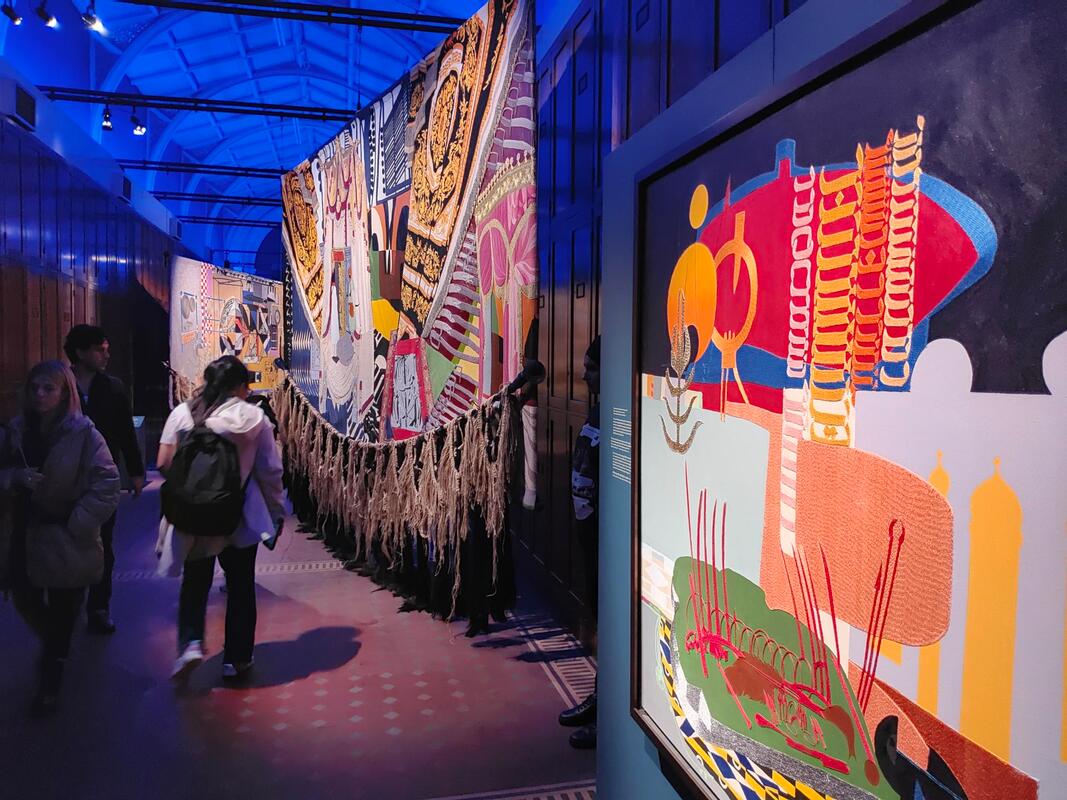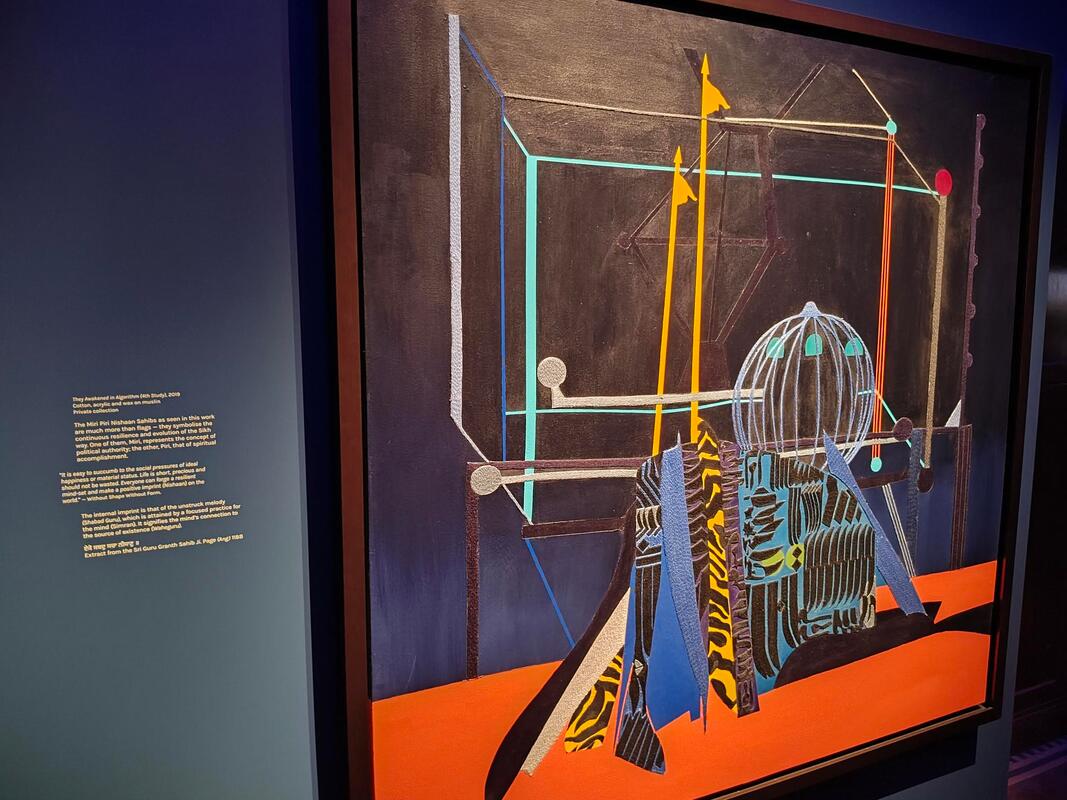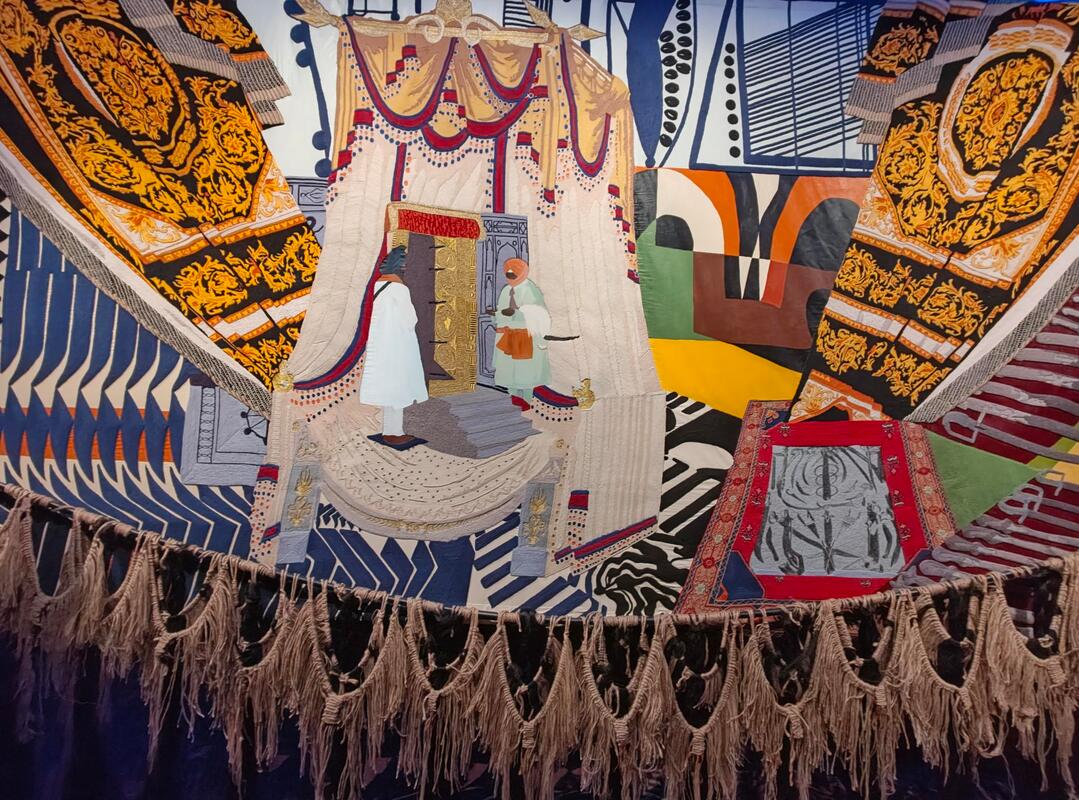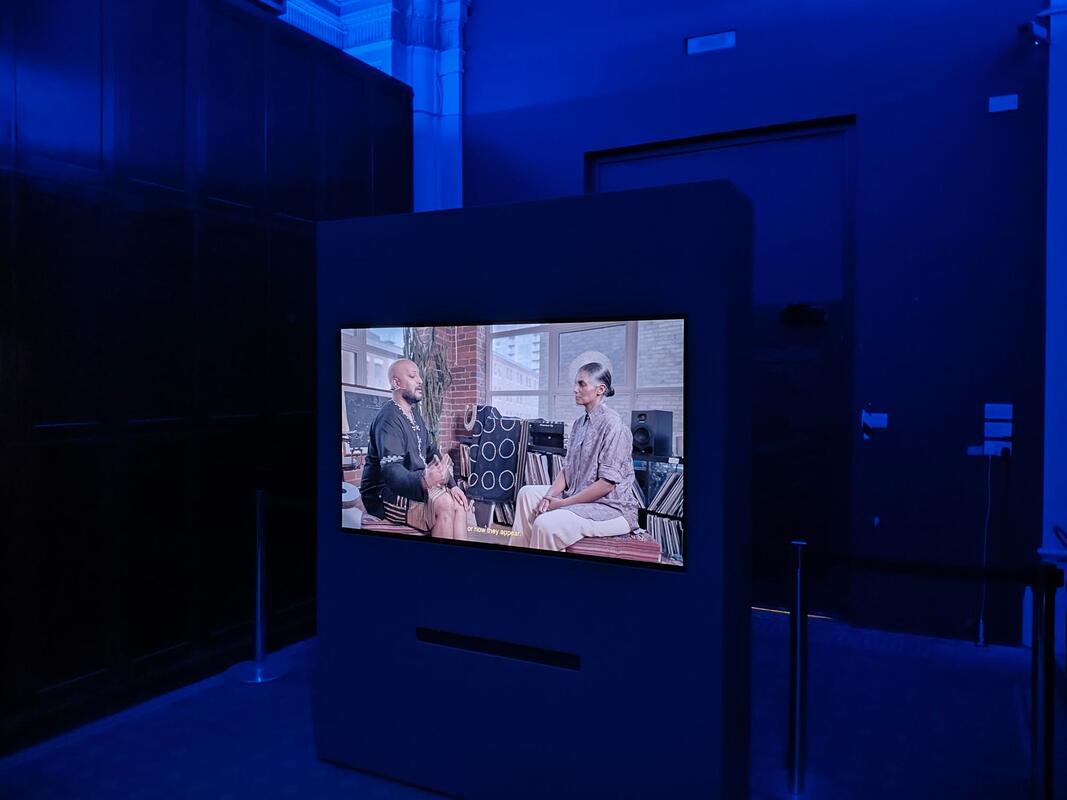Creative reawakeningWe are living through a Sikh Renaissance, a reawakening of Sikh creativity that has lain dormant since 1849. Exhibitions celebrating Sikh art (that you can read about here), music (that you can read about here), history (that you can read about here), and philosophy are extremely popular, particularly among the diaspora, and are providing a connection with the non-Sikh world in a manner not seen since the court of Maharaja Ranjit Singh. In this article I cover the latest popular exhibition - 'Unstruck Melody'. Anhad ShabdLet's start with what the exhibition is all about - the unstruck melody. This refers to Anhad Shabd (also known as Anhad Bani), the sound that has not been produced, or the unstruck sound / melody. It is a core part of Sikh philosophy, as well as some other dharmic thought. The Sikh Guru's mention the concept of Anhad Shabd often, and enlightened Sikhs throughout the centuries have shared their experiences of Anhad Shabd, from Sant Ishar Singh Rare Wale to Bhai Randhir Singh, Baba Thakur Singh and Sant Jarnail Singh Khalsa Bhindranwale. In short, it is the growing reconnection between the self and primal energy, Akaal Purakh. The reconnection between the self (aatma) and the primal energy (paramaatma) is considered the ultimate goal in Sikhi, and the Anhad Shabd is the physical manifestation of the growing reconnection. Enlightened Sikhs that have shared their experiences explain the sound current that can be felt within, a vibration that manifests itself as a sound or longer melody achieved through disciplined focus and mindfulness through meditation (simran). It is considered one of the first signs of the opening of the tenth gate (dasam duaar) and the destruction of the "I am" (haumeh) sometimes simplified as ego. A journey of discoveryI'll be honest, I stumbled across this exhibition completely by accident. It isn't something that has been heavily advertised and I hadn't heard of it even though it passed through Birmingham. I found myself in London with an afternoon to kill, and I usually head toward the Victoria and Albert Museum when I have little to do, just to look at the throne of Maharaja Ranjit Singh for the hundredth time. While I was walking around the rest of the exhibition, I was drawn to a room bathed in blue light and couldn't believe my eyes when I saw the name "Singh" near the entrance, the sound of Sikh music (kirtan) playing softly through the speakers. The project is a collaboration between Without Shape Without Form, the Slough-based British arts organisation, and Nirbhai Singh Sidhu, a British-born Canadian artist. The artistic director of Without Shape Without Form, Deep Kaur Kailey has played an important role in bringing the exhibition to life and also features in the exhibition itself. Entering the exhibition, the first thing you see is a brief explanation of the exhibition explaining that it brings together the Sikh concepts of transferring knowledge, selfless service, and community. What I really loved about the exhibition is that not only are the different exhibits explained, but the concepts refer to the main source of inspiration using passages from Guru Granth Sahib. Further inside are a mix of paintings, sculptures, and designed / altered fabric. Through these you can see concepts and images from daily Sikh life that have been creatively represented in different forms, from the twin Nishaans of Miri (political power) and Piri (spiritual power), to representations of the eternal Shabd Guru. A large fabric that showed the entrance to the court of Guru as well as other important Sikh concepts like shaster puja (weapon worship). A lot of visitors were spending time viewing the different elements that constituted the fabric, and it really felt like the most visually appealing and attention-grabbing part of the exhibition. I really liked the scale of the exhibit and mix of colours and patterns to tell a story about Sikh philosophy. The most helpful exhibit was a video at the far end of the exhibition which takes the form of a conversation between artist, Nirbhai Singh, and the artistic director, Deep Kaur, that explores more deeply the concept of selfless service, community, and knowledge transference with the ultimate goal of explaining the unstruck melody. These are all difficult concepts, but I thought the video did a great job explaining them to non-Sikh audiences in a way that was clear and easy to understand. Sure, some of the nuance gets lost, but the goal here isn't to overwhelm the viewer, but provide an introduction that can guide the individual into a journey of further self-discovery. It is free to visit the exhibition, and you even get a free newspaper-like package that provides more detail into the exhibition in both English and Panjabi. It's not a huge exhibition and 30 minutes is more than enough time to explore everything. Just get there before 5pm as they are constrained by museum opening times - I entered during the day to no problems, but when returning with a friend in the evening I could only spend a few minutes inside before they closed. Should you visit 'Unstruck Melody'?Absolutely. It is not every day that you come across an exhibition with such ambition, exploring not only broad concepts such as knowledge transference, selfless service, and community, but also spiritually difficult concepts such as the unstruck melody.
Does it achieve what it sets out to achieve? Well, it won't answer all your questions on Sikhi, or the topics prominently featured within the exhibit. But it provides the gateway and then it is up to you to decide how deep you want to go. Let's consider this, even the first concept in Sikhi (Ik Oankaar) can take up to an hour to explain properly (no, it doesn't mean one God). So, concepts like Anhad Shabd, something that ultimately is to be experienced rather than explained, isn't going to be fully answered in a short exhibition. But the ambition is admirable and to be celebrated - it certainly provided me with a greater sense of clarity. The exhibition is currently in the Victoria and Albert Museum in central London. I sometimes worry that our heritage is spread across continents and is often locked away in museum vaults or featured in lesser visited venues or cities. But to have an exhibition in the V&A is a fantastic achievement, giving Sikhi a greater profile, and the organisers deserve a lot of credit for this. If you're in London, this is a no brainer. The exhibition is still running in the V&A until mid-October. If you're in the surrounding areas or the Midlands, it's definitely worth a trip into London. Comments are closed.
|
AuthorBritish Sikh, born in the Midlands, based in London, travelling the world seeing new cultures. Archives
September 2023
Categories
All
|
Photos from Johnny Silvercloud, Nina A. J. G., Michael Vadon, jcorrius, mikecogh





 RSS Feed
RSS Feed